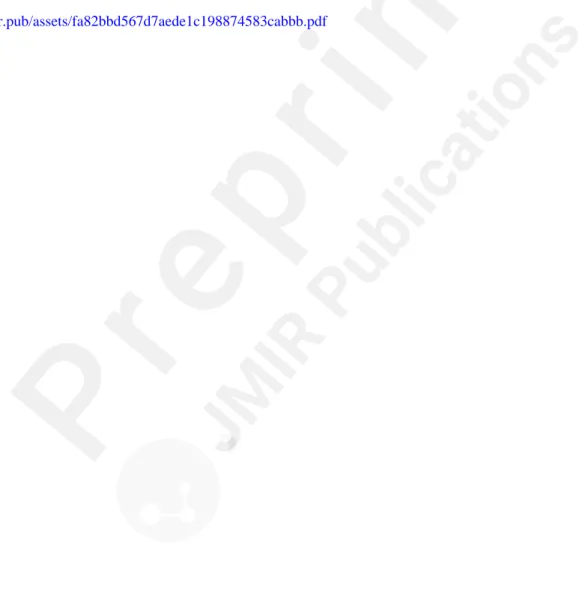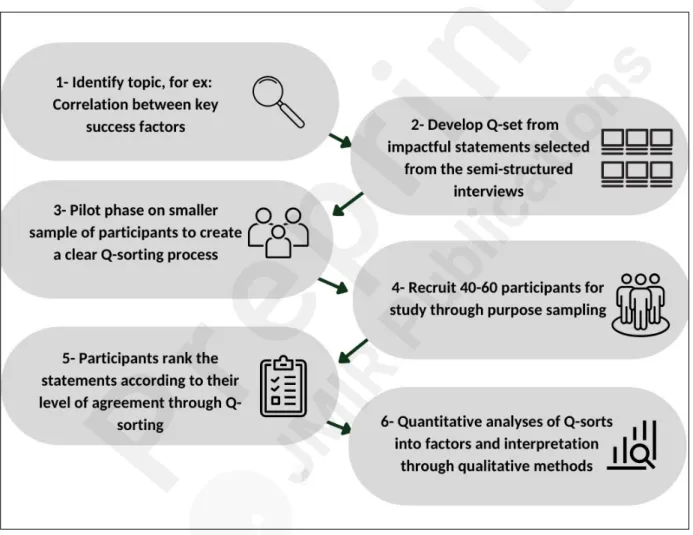Identification of key factors for optimized health services: A protocol for a multiphase study of the vaccination campaign in Dubai. Background: Mass vaccination of the global population has presented many challenges, including the efficient administration of millions of doses in a short period of time while ensuring public safety and affordability. The expected results of the first phase of the project will be the identification of key success factors, factors and barriers to the design and operation of the COVID-19 vaccination center in DOC.
While the expected results of the second phase of the study will identify patterns of similarities and differences in the classification of arrays Q. Background: Mass vaccination of the global population against the novel coronavirus (COVID-19) has presented many challenges, including the effective administration of millions of doses in a short period of time while ensuring public safety and accessibility. Method: To understand more about the operation of the Dubai One Central Vaccination Center, the study follows a multi-phase design divided into two main parts.
The expected results from the first phase of the project will be the identification of key success factors, enablers and barriers to the design and operation of the Covid-19 vaccination center at DOC. While the expected results from the second phase of the study will identify patterns of similarities and differences in the ranking of the Q-sets.
Aim and Research Questions
Conducting Semi-structured Interviews
Individual semi-structured interviews (SSI) were conducted via Microsoft Teams with a selection of staff and volunteers (n=30) working at the Dubai One Central vaccination centre. DOC staff and volunteers were considered key contributors to the design and implementation of the vaccination programme. The breakdown of each layer is included in the appendix section (Table S1 in Multimedia Appendix 1). Before the start of any interview, the research participants were asked to sign a consent form outlining their rights as a research participant and to complete a questionnaire that collected general socio-demographic data before the start of the interview, which can be found in the Multimedia Appendix sections 2 and 3 (documents S1 and S2).
The interview protocol was developed to capture the aims of the study and included two main elements: the opening statement by the interviewer and the interview script, including a set of questions that served as a guide during the discussion (Table S2 in Multimedia Appendix 4). The opening statement introduces the researcher, the purpose of the interview, how the interview results will be used, consent to the interview, the confidentiality of the interviewee's identity and options to withdraw at any stage of the process [16]. Before finalizing both versions of the interview guide, a pilot round of SSIs was conducted with a sample participant group (n=8).
In addition to testing the interview guide, if the opening statement and flow of questions were understood, the researcher probed to extract key insights and expand on certain topics where necessary. The interview guide was subsequently translated into Arabic (Table S3 in Multimedia Appendix Section 5) to accommodate the language preferences of almost half of the participants (n=14). The Arabic language SSI guide was reviewed by an independent reviewer and later back-translated by another translator to ensure consistency with the copy of the English SSI guide.
Finally, the content is currently in the process of being thematically analyzed using the MAXQDA 2020 (VERBI Software. The thought process behind the thematic analysis is to use the topics outlined in the interview guide (Table S2) as main themes During the coding process, sub-themes are intended to emerge, which will form the list of key success factors that are considered the driving force behind operations of the vaccine center.
Each of the themes and subthemes was assigned a number, and any mention of a specific theme (success factor) across all 30 interviews will be tabulated and categorized as viewed by the study.
Applying Q-Methodology
If discrepancies are found among responses, they will be referred to the principal investigator for a final decision. After gathering feedback from participants in the pilot phase, the content will be modified if necessary and shared with a larger cohort (n. The inclusion criteria for participating in this phase of the study include participants aged 18 – 70 years who can communicate fluently in English or Arabic, and who worked for a minimum of 3 months at one of the vaccination centers in Dubai.
The next step is data collection and will include 'Q-sorting' where each research participant ranks the statements in the 'Q-set' according to the same scale set in the pilot phase. After purposive sampling, a collection of the ranked statement of an individual, known as the 'Q-sort', will be statistically analyzed using the inverted factor analysis methods [1]. During the "Q-sorting" stage, individuals will be asked post-sorting questions about their experience of participating in the research and their knowledge of the topic at hand, which may lead to further qualitative insights[1].
Finally, the critical success factors that can affect the delivery of health services will be identified after discovering the relationship between the factors. These CSFs will be mapped and categorized according to the model proposed by Koumaditis K et al.
Ethical Considerations
Results
Discussion
Studies about the development of MVCs specific to the COVID-19 pandemic are still very low [8, 20]. They usually focus on documenting the MVC process, analyzing the vaccination system and understanding people's perceptions about the COVID-19 vaccine [20, 21]. However, the output from these studies is usually not related to the improvement of more general health care services and improvement of patient care.
Another example of a recently published study illustrated the application of Lean tools to develop an MVC and investigated its effectiveness and whether this approach increases the efficiency of mass vaccination areas [22]. As MVCs for COVID-19 are believed to be the first mass vaccination efforts in the current era [8], it is considered integral to document the process of creating a high-volume MVC such as the DOC Vaccination Center and the collaborative efforts to safely administer more than 1.4 million doses in the space of one year to all who need it. In addition to documenting these efforts, this study also seeks to connect the results of understanding the key success factors of implementing an MVC to its potential impact on the delivery of health care services and the improvement of patient care.
The knowledge resulting from this research, conducted in the Gulf Cooperation Council (GCC) and the Middle East (ME) region, will contribute to a more accurate global picture.
Knowledge generated from this study conducted in the Gulf Cooperation Council (GCC) and the Middle East (ME) region will contribute to a more accurate global
Limitations of the Study
SSIs were conducted with a sample of DOC Vaccination Center staff and volunteers two months before the Center closed and were completed shortly thereafter. Therefore, the time between data collection and the closure of the DOC vaccination center may have contributed to recall bias, as interviewees were asked to recall past events. Finally, due to the workload of frontline workers at the DOC vaccination center, pandemic fatigue may also be a factor that could influence their responses in the interviews.
Future research will utilize the collected data to contribute to the field of medical informatics, specifically with the aim of exploring approaches that can efficiently analyze big data, include predictive analytics and optimize decision making [23]. In line with future plans, a study will use data collected through the One Central vaccination center to develop a simulation model outlining the customer journey process and center workflow. The simulation model will focus on capturing the data at three significant milestones, including when the center reached a daily capacity to administer 1,000 doses, 4,000 doses and 10,000 doses to clients.
Simulation modeling has been identified as a smart tool that offers the prospect of testing different scenarios using a cost-effective approach and obtaining solutions to obstacles during certain phases of healthcare, fully visualizing the process [8]. This analytical phase of the research will focus on the operational aspect of designing a healthcare service and how it can assist in the decision-making process through an optimized healthcare model [23]. In a way, the pandemic accelerated the growth of designing and delivering a high-capacity vaccination center.
Therefore, it is recommended that the next stage of planning for health care services is to focus on operational efficiency, its relation to patient satisfaction, high quality care and the need to apply a Standard Operating Procedure (SOP) to processes and facilities. different [4. ]. The study provides a comprehensive two-stage approach to eliciting critical success factors that may influence the delivery of high-quality health care services, such as emergency services launched during a global pandemic. Findings from the study will be translated into key factors that can be optimized and implemented when designing future health care services, using evidence-based practice.
Finally, future work from this research study could explore methods to analyze data collected from the DOC vaccination center, incorporate predictive analytics, and optimize decision making.
Acknowledgments
Conflicts of Interest
Multimedia Appendices Section
Building primary care managed practice networks to deliver better clinical care: a qualitative semi-structured interview study. Tools to support systematic reviews in software engineering: a cross-domain study using semi-structured interviews. In Proceedings of the 19th International Conference on Evaluation and Assessment in Software Engineering 2015, April 27 (pp. 1-6).
Motivating factors for receiving the COVID-19 vaccine in the United Arab Emirates: a cross-sectional study.
Supplementary Files
Image inspired by the stages of Q methodology from A scoping review of Q methodology in healthcare research by Churruca K Ludlow K, Wu W et al.
Multimedia Appendixes
Consent form shared with all participants prior to the start of their semi-structured interview. Questionnaire used to collect sociodemographic information about each of the participants before the interview. The table outlines the themes of the groups of questions, their number, planned questions and follow-up questions that can be used during the discussion.
The final version of the interview guide translated into Arabic was developed for the semi-structured interviews. The table describes the topics of the sets of questions, their number, planned questions and follow-up probes that can be used throughout the discussion.

TOC/Feature image for homepages

